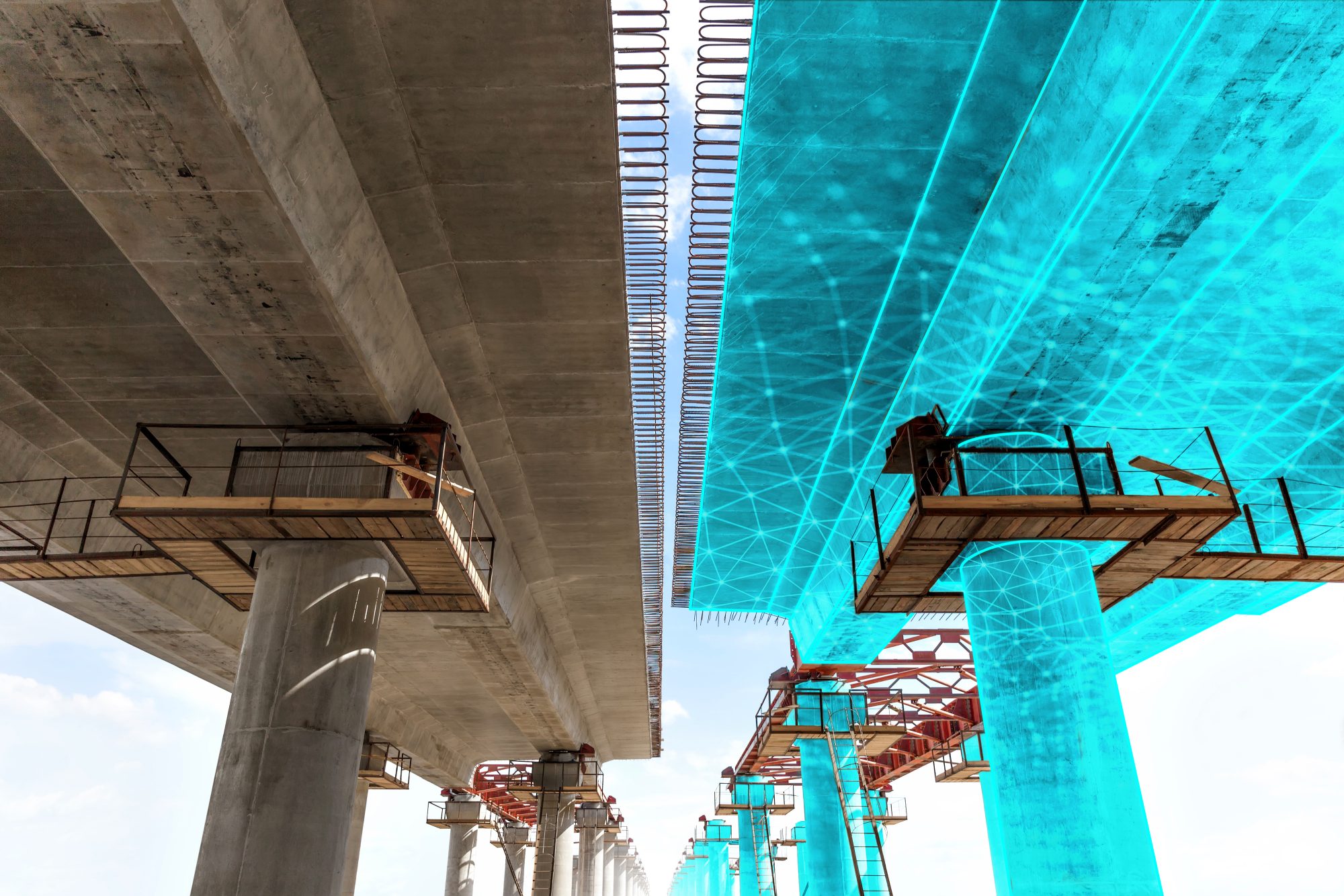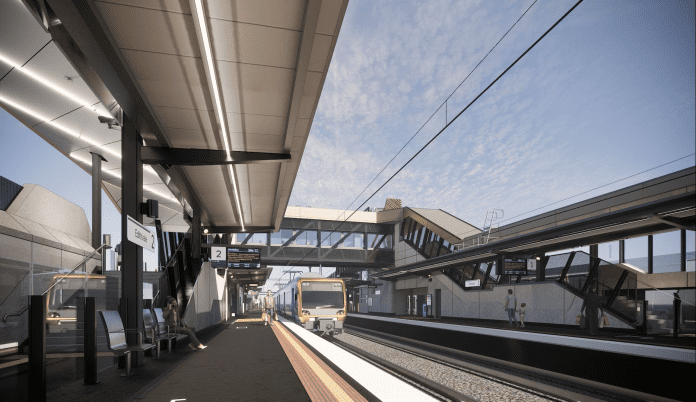Faced with rising demand and expectations, construction firms are going digital to create future infrastructure, says Mary Kay Sheahan of Bentley
The world is undergoing rapid change. Urban centres are expanding as the global population soars toward 8bn people.
New markets in developing countries are exploding. And with the influx and abundance of data, turbocharging digital transformation initiatives will alter the way we live, work and interact with each other.
Countries are investing in new sustainable and resilient infrastructure projects to support economic growth, ensure energy security and address climate change. As a result, society is modernising to be more intelligent, more sustainable and more scalable than ever before.
The construction industry is reacting to these changes by building modern, intelligent future infrastructure that collects data points from every interaction and turns them into actionable insights that optimise performance, streamline workflows and connect project teams.
Construction firms are being tasked with creating a new, connected world – one in which people, devices and infrastructure are interconnected and interwoven, operating with unprecedented awareness of the world around them.
Sustainability and resiliency are also top of mind as growth requires intelligent infrastructure that cuts costs today while preserving resources for future generations.
Teams need to collaborate to create future infrastructure
Transforming society to be more intelligent, sustainable and inclusive is a great responsibility, but it is putting a lot of pressure on today’s construction firms.
Old ways of managing projects do not work anymore, and continuing to work in supply chain and departmental silos is not enough. As construction projects grow more complicated, huge teams of experts need to come together to share information, collaborate in real-time and orchestrate complex workflows and project schedules around each other.
Unfortunately, construction firms are dealing with a slew of challenges. Expectations are through the roof. Future infrastructure needs to be sustainable, resilient and equitable.
Future infrastructure must also meet the high-performance requirements of today’s always-on, 24/7 world. Despite so much at stake, projects are expected to be completed on time and under budget with limited resources, workforce shortages, growing skills gaps and fragmented supply chains. Decisions that are made today have consequences that will last for decades.
The combination of incredible demand, high expectations and systemic challenges across the industry have led to shrinking profit margins and increased project risk.
The pressure to go towards digital
The construction industry has evolved over the last few years in response to these challenges. Adopting new, innovative technology and more efficient digital workflows allows firms to improve how projects are designed and delivered – thereby increasing profit margins and building more resilient and sustainable infrastructure.
As a result, construction teams are embracing advanced digital technologies, prefabrication and modular construction and connected jobsites as a way to improve productivity, enhance collaboration, orchestrate complex workflows and do more with less.
Implementing these trends within organisations will enable the scaling of best practices and improve the management and analysis of the influx of construction data to connect the supply chain. It will increase collaboration and coordination throughout the construction lifecycle.
Examples below will demonstrate how leading construction firms are implementing these trends today, allowing them to be prepared for meeting the needs of tomorrow.
Advanced digital technologies
The construction industry is challenged with an ageing and retiring workforce, and recruiting young talent with the skills to take their place is a necessity. In the United States, more than half of construction firms are turning down work due to workforce shortages.
Construction firms need to bridge this gap by relying on advanced digital technologies that create efficiencies, streamline workflows and deliver positive outcomes.
New digital technology such as digital twins, 4D modelling, virtual reality (VR), augmented reality (AR), cloud computing, artificial intelligence (AI) and machine learning (ML) are empowering users to better design, build and operate improved, more intelligent infrastructure while working smarter.
These capabilities will augment human abilities and decision-making – allowing construction firms to meet demand and high expectations. Digital technology will also help bridge the skills gaps and workforce shortages by improving productivity and attracting digitally savvy recruits.
In Parramatta, Australia, engineers used new digital applications to help bring a critical bridge project to completion on time and under budget. The bridge, the first true diagonal arch bridge in the country, is vital to the development of the area, connecting several rail, light rail and other transportation corridors with surrounding vibrant neighbourhoods.
However, building this iconic bridge in a busy residential and commercial area presented several site and structural challenges, including scheduling, noise disruptions, sediment preservation and tree protection along the riverbank. Different construction methods, scenarios and mitigation strategies would have to be tested to minimise environmental and resident impact.
Rather than rely solely on past experience, assumptions and paper designs, Abergeldie Contractors worked with construction planning consultant Solid Support to produce a 4D animation that clearly defines the bridge construction process from start to finish. It includes detailed simulations of the installation of the main bridge arch and crane, along with what materials had to be moved to specific spots at specific times.
The animation gave contractors, residents and other stakeholders a detailed plan about how construction would be completed and provided a baseline for identifying potential issues and ways to further optimise the design and processes.
Once construction started, the animation gave Abergeldie Contractors a plan for implementing last-minute changes in real-time without impacting the timeline. According to the project managers, simulating the construction process with a digital twin allowed the team to complete the project in half the original estimate.

Prefabrication and modular construction
Manufacturing building components offsite and assembling them on-site can also improve productivity, slash project timelines, minimise disruption and ensure positive outcomes. But to achieve these benefits, project managers need to plan and orchestrate prefab construction and installation very carefully.
Digital models help identify potential clashes and streamline production processes, reducing the need for costly and time-consuming work on-site. Simulating this orchestration in advance identifies bottlenecks, such as supply chain delays, logistical challenges and site constraints that may delay construction timelines.
The simulation also improves coordination between project stakeholders, ensuring everyone has access to a centralised digital model that ensures collaboration, communication and alignment. Integrating digital models with construction automation technologies – such as robotics, drones and IoT devices – improves efficiency and accuracy through optimised workflows.
This more scalable way to work reduces errors and manual labour, eliminates the possibility of misunderstandings and ensures that projects are completed on time and under budget in the most optimal way.
Connected construction jobsites
At nearly every construction site, information typically goes through the construction supervisor, who needs the right information at the right time about materials, equipment and people to create accurate project forecasts and maintain safety protocols.
Daily reports, in particular, are critical for determining what happened on-site on any given day and what needs to be done next. In the past, this knowledge meant dozens of one-on-one conversations and a mobile trailer filled with paper documents.
Disputes were resolved by gathering key stakeholders – putting operations on hold while a solution was manually ironed out. According to the Arcadis 2022 Global Construction Disputes Report, increasing complexity on the jobsite has made the average time taken to resolve disputes to increase significantly over the past two years.
Moving these manual, paper-based processes to digital applications solves these challenges by making critical information available in a single, searchable database that is accessible to all stakeholders. Data can be captured by smartphones carried by nearly everyone on site, ensuring that all information, even the seemingly mundane, is captured. These construction management applications make it easy to access, manage and georeference progress reports, photos, videos, models and files in seconds.
This digital documentation can serve as an audit trail, proving that materials were delivered on time, work was completed to schedule and other contractual obligations were met. These digital construction solutions allow supervisors to bring the office with them into the field with all the applications and information they need to keep projects moving on time and under budget with minimal disruptions.
For example, a project to build a series of interchanges on the busy M42 motorway in the United Kingdom required construction components to be built in a nearby field to avoid disrupting residents and travellers. Skanska, one of the largest construction companies in the world, built an extensive 4D model of the site to better orchestrate the comings and goings of hundreds of contractors, workmen and delivery teams.
Virtual construction rehearsals were held to ensure the two spans could be moved into place by huge cranes in a single weekend. Digital simulations of the operation modelled exactly how the move should take place, which contractors and teams could work together, and where disruptions were likely to occur.
Project managers rehearsed the orchestrated events multiple times with a digital twin to identify potential bottlenecks and ensure the move would occur with minimal issues. It also allowed Skanska to create an hour-by-hour sequence of events that was visual and realistic, allowing engineers to communicate with stakeholders and the public in real-time. As a result of this real-time worksite coordination, the two spans were moved into place over the M42 in a single weekend, minimising disruption to residents and travellers.
Rising stakes in a smarter world
The construction industry strives to make the world smarter, scalable, more sustainable and more equitable, but systemic challenges are making it hard to meet expectations and deliver projects on time and under budget.
Digital construction management gives construction firms fingertip access to the capabilities and information that they need to improve productivity, enhance collaboration, orchestrate complex workflows and do more with less. The world is watching and the industry cannot afford to lag in its digital transformation. The stakes are too high.
Mary Kay Sheahan
Director of product marketing
Bentley














